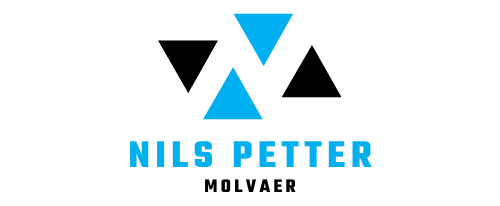How to Develop Real Estate Projects that Also Serve as Wildlife Corridors?

Balancing urban development with the preservation of wildlife habitats is a challenge that developers face in today’s rapidly urbanising world. There is a growing need for sustainable development that considers not just human needs, but also those of local flora and fauna. As developers, how can you contribute to sustainability by creating real estate projects that serve as wildlife corridors? Let’s delve into this topic.
Understanding Wildlife Corridors
Before diving into the how-to, it’s important to first understand what wildlife corridors are and why they matter. Wildlife corridors are areas of habitat connecting wildlife populations separated by human activities or structures, such as roads, developments, or logged areas. These corridors are a vital component in wildlife conservation.
Cela peut vous intéresser : What Planning Challenges Do Developers Face When Building Near Historic Battlefields?
Wildlife corridors are critical for maintaining high levels of biodiversity in fragmented landscapes, and they provide numerous environmental and ecological benefits. They facilitate the movement of animals, aiding in their search for food, mates, and new habitats. Importantly, these corridors also allow species to adapt to environmental changes and challenges, such as those posed by climate change and urbanisation.
Integrating Wildlife Corridors into Real Estate Development Planning
So, how can we integrate these vital wildlife pathways into real estate development projects? The first step is in the planning phase. Prioritising ecological considerations from the start of a project can help ensure that development is sustainable and minimally disruptive to local ecosystems.
A voir aussi : How to Negotiate Lease Terms for Retail Spaces in Mixed-Use Developments?
Firstly, conduct thorough ecological assessments of the development site. Identify areas of high biodiversity and existing wildlife corridors in the area. By understanding the physical and environmental characteristics of the site, you can design developments that harmonise with the natural environment, rather than disrupt it.
Secondly, incorporate green spaces into the project design. This can take many forms, such as rooftop gardens, green walls, and landscaped areas within the project. These spaces can serve as mini-habitats for local wildlife and can also act as stepping stones, connecting larger habitats and creating a network of wildlife corridors.
Lastly, consider using innovative designs and construction techniques to minimise impact on wildlife. For example, overpasses or underpasses can be built for animals to safely cross busy roadways, and building designs can incorporate features that deter birds from colliding with glass.
Building Partnership with Local Conservationists and Regulatory Bodies
Successful integration of wildlife corridors in real estate projects is often the result of partnerships between developers, local conservation organisations, and regulatory bodies. These partnerships can provide valuable insights into local ecosystems and wildlife habits, helping you to create more effective and sustainable wildlife corridors.
Establishing relationships with local conservationists can provide valuable insights into habitats and species in the area. They can also offer advice on how to minimise the impact of development on these ecosystems. Meanwhile, regulatory bodies can provide guidance on relevant environmental laws and regulations to ensure that your project complies with all necessary guidelines.
In addition, partnering with these organisations can also be beneficial in terms of public relations and marketing. It demonstrates your commitment to sustainability and responsible development, which can enhance your brand’s reputation and appeal to environmentally-conscious consumers.
Monitoring and Maintenance of Wildlife Corridors
Once the project has been completed, ongoing monitoring and maintenance of the wildlife corridors is crucial. This will ensure that the corridors are functioning as intended, and can help identify and address any issues that may arise over time.
Regular ecological surveys can help monitor the health and use of the corridors by local wildlife. If needed, modifications can be made to improve the effectiveness of the corridors. For example, if a particular species is not using the corridor as expected, changes can be made to the corridor’s design or vegetation to make it more appealing to that species.
Maintenance is also crucial. This can include regular landscaping to ensure the corridor remains suitable for wildlife, as well as measures to manage human access and minimize disturbance to animals.
Promoting Community Engagement and Education
Integrating wildlife corridors into real estate projects is not just about designing and constructing physical structures. It’s also about promoting awareness, understanding, and respect for local wildlife among residents and the wider community.
Involve residents and local communities in the planning and ongoing maintenance of the corridors. This can foster a sense of ownership and responsibility toward these spaces, and encourage behaviors that support wildlife conservation.
Educational programs can also be implemented to raise awareness about the importance of wildlife corridors and biodiversity. Informational signage near the corridors, workshops, and guided tours can all help foster a greater connection with local ecosystems and encourage their protection.
In conclusion, integrating wildlife corridors into real estate projects is a complex but rewarding task. It requires careful planning, ongoing maintenance, and active involvement from the community. But the end result is a development that not only serves human needs, but also contributes to the conservation and sustainability of our precious wildlife.
Collaborating with Architects and Engineers for Wildlife Friendly Designs
The implementation of wildlife corridors in real estate projects does not solely rely on the developer’s will. The partnership and commitment of architects and engineers are equally crucial in bringing this sustainable vision to reality.
During the initial stages of design, architects and engineers must work closely with ecologists to incorporate features that promote wildlife movement. They can include elements like vegetated roofs, bird-safe glass, and green bridges in their designs. Vegetated roofs, also known as green roofs, help reduce the heat island effect and provide habitat for birds and insects. Bird-safe glass, on the other hand, helps prevent bird collisions, a major cause of bird mortality in urban areas. Green bridges, which are basically “bridges” covered in vegetation, can be constructed over roads to allow safe passage for wildlife.
Architects and engineers should also aim for designs that minimize habitat fragmentation. This could be achieved by clustering buildings together, thereby leaving larger undisturbed areas for wildlife. Using materials and colors that blend with the natural environment can also help minimize the visual impact of the development on wildlife.
In addition, construction practices should be carefully managed to minimize disturbance to wildlife. This could involve scheduling construction to avoid sensitive periods for wildlife, such as breeding seasons, or using quieter, less invasive construction methods where possible.
Contributing to Urban Biodiversity through Real Estate Projects
Developing real estate projects that serve as wildlife corridors is a significant step towards maintaining urban biodiversity. It contributes to the larger goal of creating sustainable cities that are not only economically and socially viable, but also environmentally friendly.
By incorporating wildlife corridors into real estate developments, we are providing much-needed habitats for a wide range of species. These corridors can be home to insects, birds, mammals, and other creatures, contributing to the overall biodiversity in urban areas.
Moreover, wildlife corridors in urban settings also enrich our day-to-day life. They provide natural spaces for people to explore, which is important for mental and physical well-being. They also offer educational opportunities, helping us learn about local flora and fauna and the crucial role wildlife plays in our ecosystems.
Conclusion
In an increasingly urbanized world, striking a balance between real estate development and wildlife conservation presents a unique challenge. However, it also offers a unique opportunity to create sustainable, vibrant cities that support not just human life, but all life.
By integrating wildlife corridors into real estate projects, developers can contribute to sustainability and biodiversity, while also enhancing the quality of life for residents. This involves careful planning, innovative design, collaboration with various stakeholders, ongoing maintenance, and community involvement. Undoubtedly, it is a complex process. But the result – a harmonious co-existence of people and wildlife in urban landscapes – is certainly worth the effort.
As developers, architects, engineers, and conservationists, it is our shared responsibility to ensure that our cities and communities grow in harmony with nature. Let’s embrace this challenge and work together to build a sustainable future for all.
